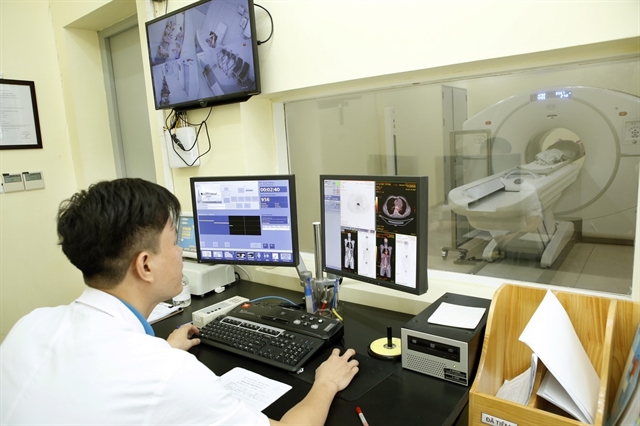 Society
Society

Only cardiovascular diseases kill more in the country annually.

|
| Cancer screening at National Cancer Hospital. — VNA/VNS Photo Dương Ngọc |
HÀ NỘI — Cancer is the second leading cause of death in Việt Nam, accounting for 17.9 per cent and 19.9 per cent of total deaths caused by diseases in the country in 2010 and 2017 respectively.
Only cardiovascular diseases kill more in the country annually.
The statistics were revealed in the report 'Cancer preparedness in Asia-Pacific: Progress towards universal cancer control' by the Economist Intelligence Unit (EIU) released early this month.
The report looks at different responses to cancer in Asia-Pacific and the essential elements needed to enhance preparedness in the region.
The 10 countries included in this study were chosen based on various factors including size, income-level diversity and progress made towards universal health coverage (UHC). They are Australia, China, India, Indonesia, Japan, Malaysia, the Philippines, Thailand, South Korea and Việt Nam.
According to the report, Việt Nam ranks second from bottom in cancer preparedness among the countries with an overall score of 44.5 out of 100, just above the Philippines whose score is 42.6.
The regional average score is 66.5 while Australia, South Korea and Malaysia lead the region with scores of 92.4, 83.4 and 80.3 respectively.
The report also pointed out that in middle-income countries, the cancer mortality rate ranges from 60 to 70 per cent. Meanwhile, the percentage in high-income countries is from 30 to 50 per cent.
According to the report, nearly 70 per cent of cancer patients in Việt Nam die, a figure which raised public concern.
Director of the National Cancer Hospital, Assistant and Dr Lê Văn Quảng told Sức khoẻ& Đời sống (Health & Life) newspaper that the EIU’s report took data from 2018 when Việt Nam reported 165,000 new cancer cases and 115,000 deaths caused by cancer. The number of deaths was not of new cancer cases but accumulated numbers from previous years.
“Cancer mortality rate reported within one year can not be as exact as those collected in a period, for example, three or five years,” he said.
“To evaluate any country's ability in cancer treatment, it should be based on the time patients survive after they receive diagnosis and treatment,” he said.
“It is not true that 70 per cent of cancer patients in Việt Nam died within a year of being diagnosed,” he said.
The EIU’s report said the mortality rate of cancer patients within a year in Southeast Asian countries including Việt Nam is 29 per cent.
In Việt Nam, the three most common cancers - lung cancer, liver cancer and stomach cancer – usually develop fast with malignant tumours and are difficult to treat.
Meanwhile, in Australia, the three most common cancers are breast, prostate and colorectum which usually develop slowly and can be treated well in Việt Nam.
In South Korea, the three most common cancers are thyroid cancer, stomach cancer and colorectum cancer, Quảng said, adding that Việt Nam now can treat thyroid cancer well.
He emphasised that the types of cancer and causes of cancer affect the mortality rate differently in different countries.
How to reduce the burden?
Currently, Việt Nam has similar equipment and medicine for cancer treatment as in other countries.
However, it still needed to improve and implement four major tasks in its cancer prevention and control plans, Quảng said.
The four tasks are preventive measures, early screening, treatment and pain relief.
In Việt Nam, the cancer prevention and control programme is part of the programme on non-communicable diseases prevention and control but funding for cancer is modest.
In addition, health insurance does not cover early cancer screening.
“In the near future, if health insurance covers part of the cost for cancer screening, especially for high-risk groups, more people can access the screening,” he said.
"The sooner the disease is detected, patients have more chance to be cleared from the disease and medical costs are also reduced," he said.
Quảng also called on people to have regular health check-ups for timely detection and treatment. — VNS




